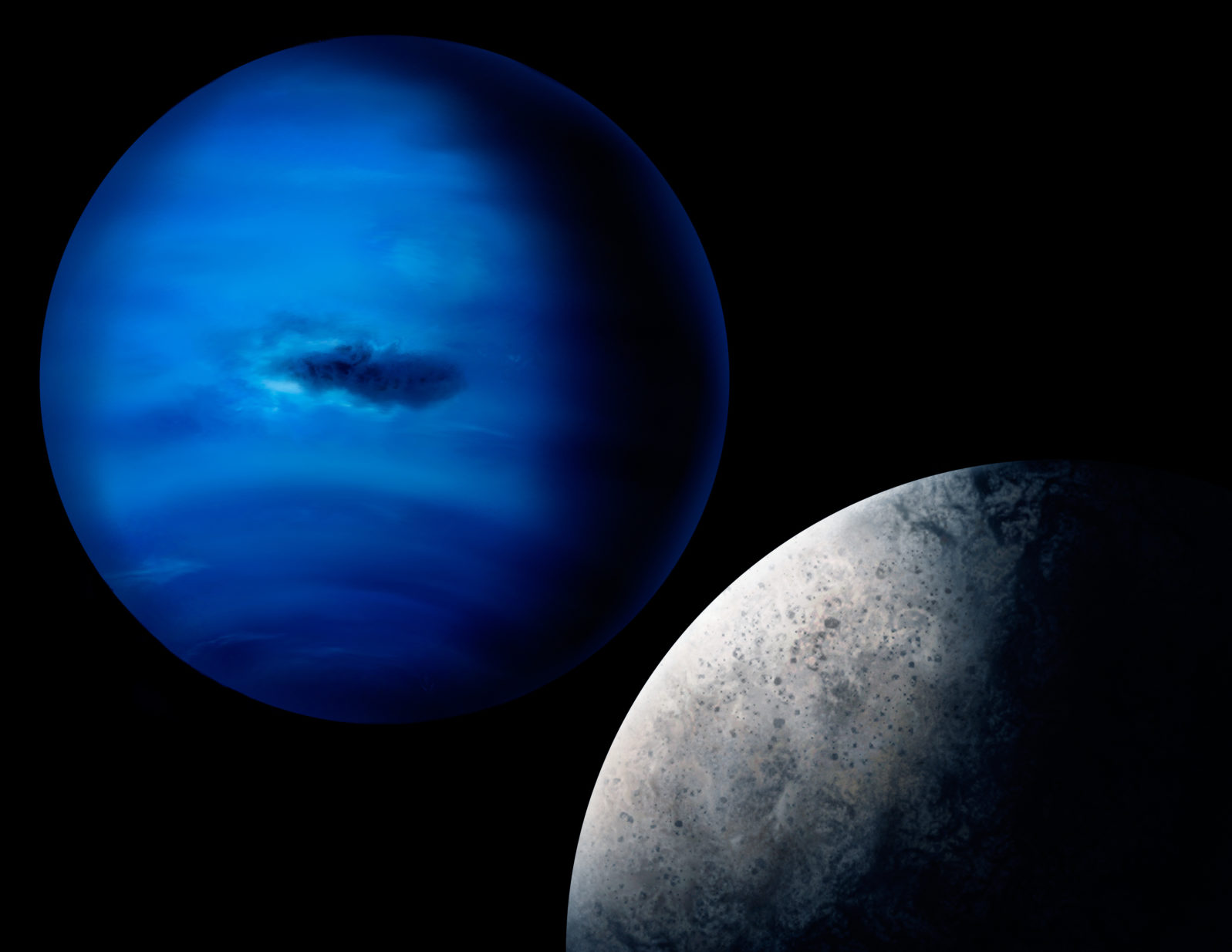Search for Extraterrestrial Life 13
A surprising candidate in the search for life in our solar system is Neptune’s moon TritonIn our universe:
The invisible numbers of the universe: At Scientific American, “Invisible Numbers Are the Most Beautiful Part of Every ‘Space’ Image”: “We are drawn to breathtaking images of the heavens, but there is beauty in the numbers those images hold … Scientists are trained to understand reality through the interface of models. To an astronomer, a graph with a meandering curve that constitutes proof of a gravitational wave rippling through a detector can be as exciting as seeing a movie visualizing the merger of two black holes.” (Fabio Pacucci, November 16, 2022)
Asked by Laurence Tognetti at Universe Today: What if we are truly alone? “The astronomer Carl Sagan was famous for his quote in his book and film, Contact, “The universe is a pretty big place. If it’s just us, seems like an awful waste of space.” Yet, for some of us, it’s incredibly hard to fathom that it’s just us in the vast unknown full of so many stars and a growing list of exoplanets being discovered on a near daily basis. However, despite all our endless searching, we’ve so far found no one.” Well, yes, but in fairness, we have only been looking seriously for a century or so and it is a big universe and has been around a long time…
In our galaxy:
WASP-39b: “A boiling Saturn-like planet 700 light-years away from the sun has become the best-explored planet outside our solar system. The James Webb Space Telescope’s measurements of the planet’s atmosphere have revealed unprecedented details of its chemistry, and even allowed astronomers to test methods for detecting alien life.” ( Tereza Pultarova , Space.com)
While some look for Earth 2.0, others consider searching for life on highly eccentric exoplanets: “All things considered, could highly eccentric exoplanets potentially harbor life? ‘I certainly think it is a possibility,’ said Dr. Tyler Robinson, who is an Assistant Professor in the Department of Astronomy and Planetary Science at Northern Arizona University, and an expert in planetary and exoplanetary atmospheres. ‘Like so many things, though, the perceived likelihood of harboring life will depend on key details.’” (Laurence Tognetti, Universe Today)
Curiously, among the over 5000 exoplanets discovered and nearly 9000 awaiting confirmation, there is a “radius valley”: Few planets whose mass is 1.8 times Earth’s side. (Matt Williams, Universe Today) Paper.
In our solar system:
While we often hear about Saturn’s moon Enceladus theses days, in the search for life, Neptune’s moon Triton seems to be getting some attention too: “‘Triton may be an ‘ocean world’, a moon that has a solid ice crust over a liquid water subsurface ocean,’ said Dr. Candice Hansen-Koharchek, who is a planetary scientist and was a Voyager Imaging Team Assistant Experiment Representative during the Voyager missions.” (Laurence Tognetti, Universe Today) It is a very unusual moon:
Right next door:
Mars:
Although clouds on Eath and Mars share similar patterns, many clouds on Mars are driven by dust, not water.
According to recent research, there is still magma on Mars, so it is in that sense still “slightly alive,” as revealed by marsquakes. Paper.
NASA intends to focus increasingly on helicopters for exploring Mars:
Here on Earth:
Hydrothermal vents under the arctic ice a thought to make “perfect places” to practice exploring the possibility of life on Jupiter’s moon Europa: “It turns out, there’s a very good analog for Europan volcanism deep beneath Earth’s Arctic Ocean. It’s called Aurora and it has a lot to show about the role of such vents here at home. Scientists discovered Aurora in 2014 and cataloged it as another hydrothermal system.” (Carolyn Collins Petersen, Universe Today) One site was found to have conditions similar to those of Saturn’s moon Enceladus: “” (Woods Hole)
And from Space.com, “Water trapped below Earth’s surface for billions of years could hold keys to unlocking the secrets of extraterrestrial life.” The life forms in those waters do not need oxygen to survive and could help us better understand the possibilities for life on other planets, including exoplanets. (Tereza Pultarova)
Meanwhile, at Discover: “What Are UAPs And What Do We Know About Them So Far? Five to 10 percent of aerial phenomena are unidentified, including one that “ shows an AAV moving fast and against the wind. The pilots are shocked as it pivots sharply on its axis. In the video’s audio, you can also hear the pilots mention that ‘there is a whole fleet of them.’” Could be weird weather phenomena or technology of hostile earthly powers but, either way, NASA has decided to investigate some of them much more seriously.
Our universe is fine-tuned for life:
The most fundamental type of fine tuning pertains to the laws of physics and chemistry. Typically, when physicists say that the laws of physics exhibit fine tuning, they are referring to the constants within those laws. 33 But what exactly are the “constants” of the laws of physics? …
The gravitational force constant represents a kind of mysterious “X factor” that allows physicists to move beyond just knowing proportionality relationships— that is, that certain factors increase or decrease as other factors increase or decrease. Instead, it allows physicists to compute the force of gravity accurately if they know the values of those other variable quantities (mass and distance) and the value of the constant of proportionality.
Stephen C. Meyer, Return of the God Hypothesis (HarperCollins, 2021) pp. 215, 216 Kindle Edition.
You may also wish to read: News from the search for extraterrestrial life 12. Some stars seem to be defying the known laws of physics; others are found to produce specific rare elements when they collide. Researchers are mapping the ocean on Mars, as it was 3.5 billion years ago when Mars was a much warmer, wetter world, and more Earth-like.
